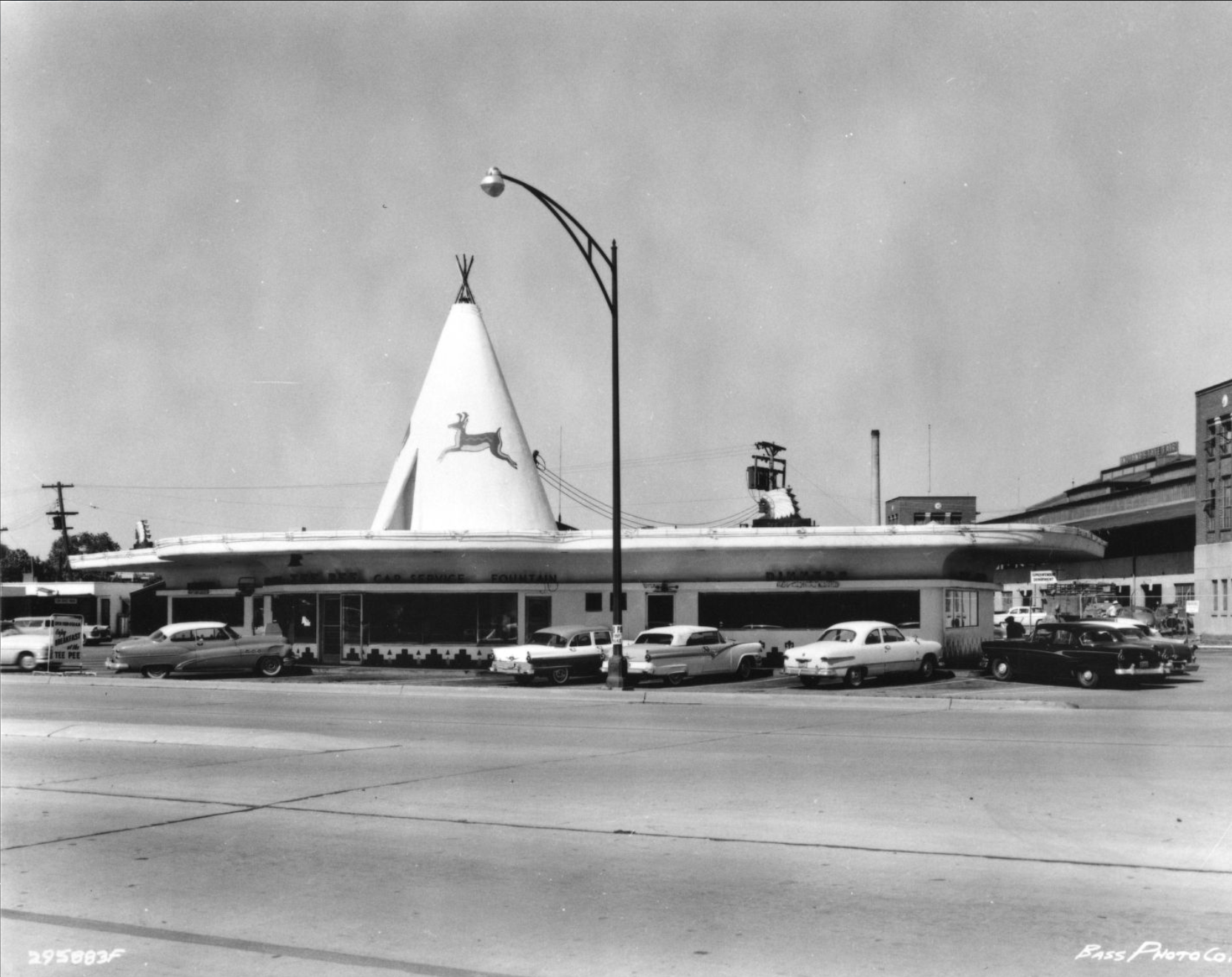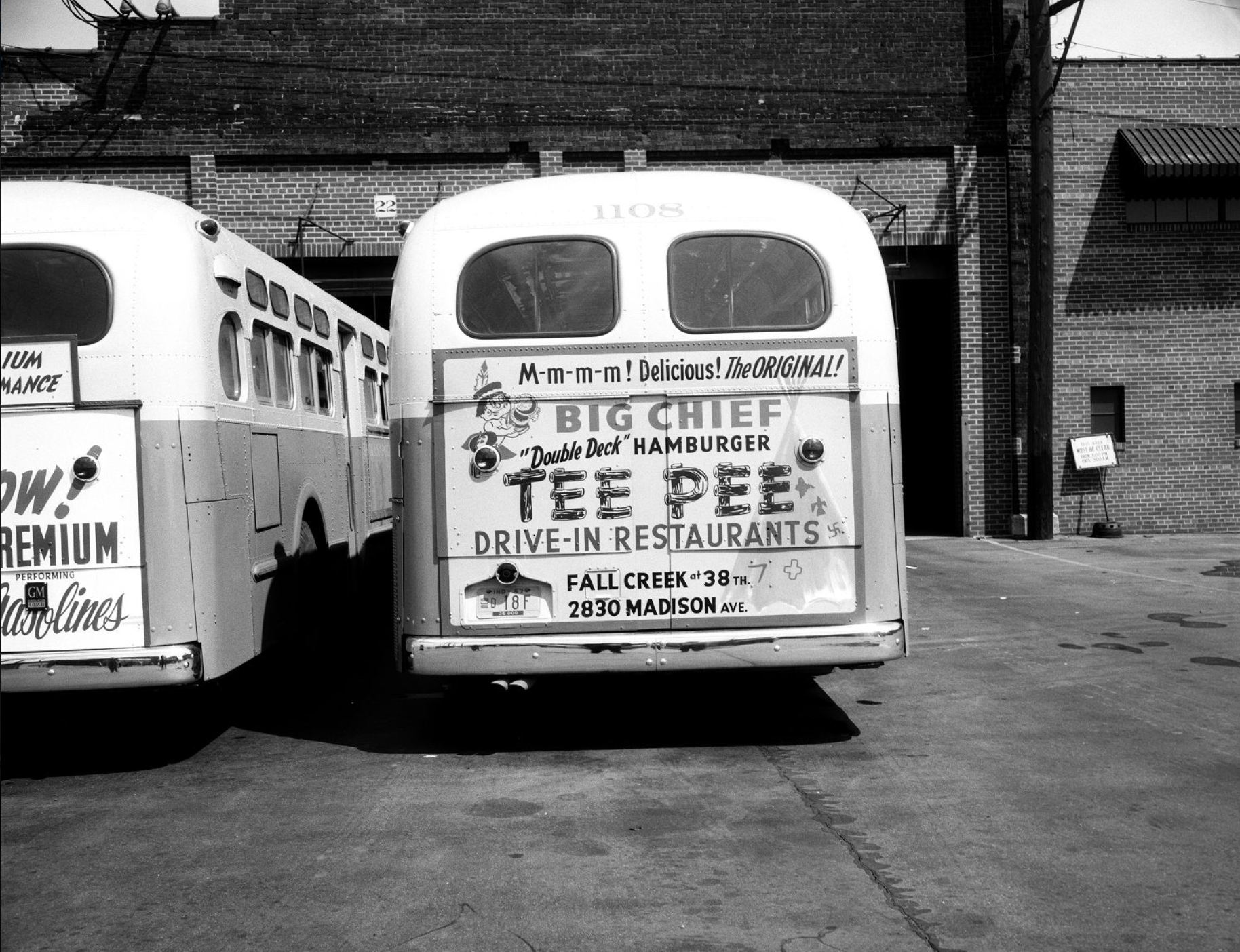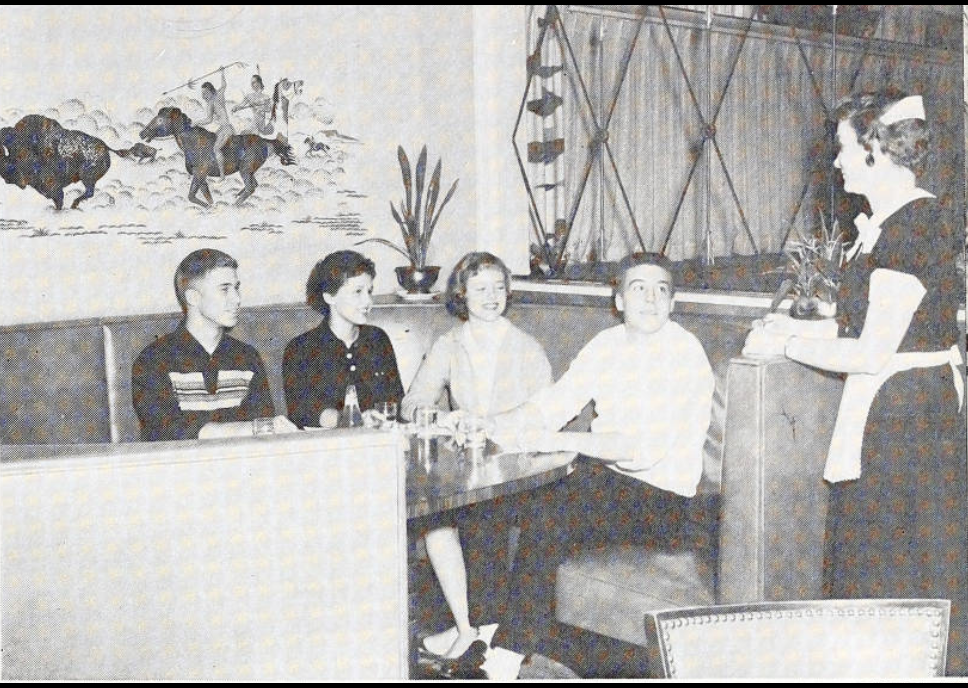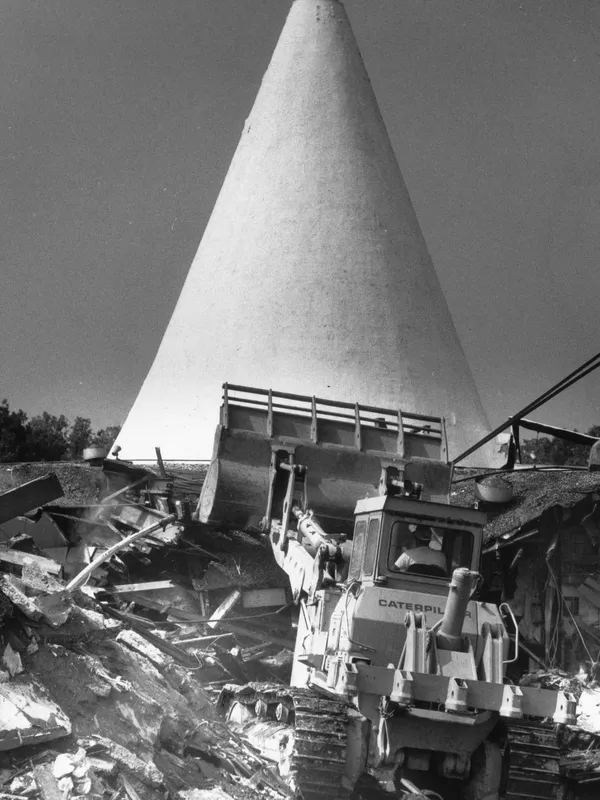An iconic Indianapolis drive-in restaurant, the Tee Pee owed its beginning to Albert Ray McComb (May 1892-June 1964), who came to the city in the early 1920s as secretary, treasurer, and manager at the C. H. Meyer Cigar Company. McComb spent the winter months in San Marino, California, where he was part owner of a café at the Santa Anita Racetrack. In California, McComb noticed that motels and restaurants used roadside architecture to draw the attention of motorists to their venues.

After the cigar company filed for bankruptcy in 1928, the idea of using roadside architecture to pique consumers’ curiosity inspired McComb to try something similar in Indianapolis. He envisioned opening a type of restaurant where motorists could order food from waitresses who would come to their cars, take the order, and then deliver the food to the motorists, where they could eat in the comfort of their vehicles. McComb developed an idea to build a restaurant shaped like a tee pee after he saw the Native American dwellings while driving through Arizona on his way back and forth from Indiana to California.
In 1932, during the height of the Great Depression, McComb, his wife Dorothy, and Ethel Hughes filed papers to incorporate Tee Pee, Inc. The drive-in restaurant, first called the Wigwam, opened on July 4, 1932, at 3820 Fall Creek Boulevard. He leased the property from the Indiana State Fair Board. It served ice cream, sandwiches, and other local favorites.
McComb’s concept was an instant success. Originally open only during the summer, Indianapolis residents flocked to eat their meals from their cars. So, McComb wound up remaining open year-round. In 1936, he changed the name of the restaurant to the Tee Pee Cone Shop and, in 1939, redesigned the restaurant.
What took shape was a stucco, multicolored Native American-style tee pee with Native American “thunder bird” wings protruding from the building’s north and south ends. A cantilevered canopy extended around the entire building. Most importantly, there was air-conditioned indoor seating.

After World War II, the drive-in craze skyrocketed. With his “come as you are” theme, McComb’s restaurant became a popular hangout for families, local students, and the after-theater crowd. The Tee Pee Restaurant became the place to be seen in Indianapolis.
The Tee Pee grew to be so popular that McComb had to expand the kitchen and enlarge the basement, which served as a storage and prep space. McComb kept the restaurant open from 6:30 a.m. to 1:30 a.m., Saturday through Sunday. He had four separate menus: breakfast, lunch, dinner, and one for the motorists. Popular items included the “Big Chief” and “Big Teep” hamburgers. All the pies were freshly baked, and everything was moderately priced.

A key ingredient to McComb’s success came from his continued effort to provide unmatched customer service, provide quality food, and upgrade his restaurant when needed. He had a strict training program for all employees. McComb provided everyone with a booklet that explained how to provide efficient service, how to engage in customer relations, and how to properly serve food. There was always a manager on duty. The drive-in lot was well-lit, and the interior boasted modern décor.
McComb opened a second Tee Pee on the south side of town in 1954, at 2830 Madison Avenue, near Manual and Southport high schools. Within three years, McComb had to expand the location to double its original size.
By 1962, on the 30th anniversary of the opening of the first Tee Pee Restaurant, McComb had started his succession plan. His son Charles and son-in-law Curtis W. Jensen stepped into supervisory roles at the two existing locations.
The third location McComb opened was in Nora at 1365 East 86th Steet in 1964. This location was the shortest-lived of the three, in operation from 1964-1968, perhaps a result of McComb’s death in June 1964, when Charles took over the operation of the business.

By the 1970s, the drive-in craze had waned, and. McComb’s widow sold the Madison Avenue location to McDonalds in 1978. Within days, McDonald’s demolished the tee pee structure to make way for the fast-food chain’s iconic golden arches. Shortly after the demolition, Dorothy McComb died. The heirs to the remaining Tee Pee restaurant sold the business and the trademark rights to Richard P. Turner.
Turner aimed to revitalize the Fall Creek Boulevard location. Though the restaurant’s tee pee provided a visual marker on the east side of town, it had fallen into disrepair. Unable to reenergize the restaurant, Turner sold the business in 1980. The business was sold two more times before the Indiana State Fair Board voted to tear down the restaurant to make way for more parking, on February 12, 1982. Preservationists at Historical Landmarks of Indiana (see ) fought to save the building. In fact, the structure was listed on the National Register of Historic Places, but the building was razed in June 1988 and was delisted from the register in 1989.
In 1987, Richard Turner opened the South Pole Restaurant on the south side of Indianapolis. He used many of the menu items from the Tee Pee Restaurant and teased the press with his dream of resurrecting the Tee Pee franchise. Twenty years later, in May 2007, Turner announced that he hoped to resurrect the Tee Pee brand with a new restaurant on Madison Avenue, as part of that area’s revitalization effort called the Miracle Mile. That dream never materialized.

Help improve this entry
Contribute information, offer corrections, suggest images.
You can also recommend new entries related to this topic.